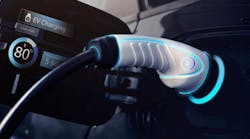At a basic level, the primary chemical composition of antifreeze (or, coolant) used in diesel engine cooling systems comes in two categories: Ethylene glycol (EG) and propylene glycol (PG).
“EG was first introduced by Prestone in 1927 as a nonflammable solution to the freezing and boil-over of cooling systems,” Colin Dilley, vice president of technology at Prestone Products Corporation, says. “To this day, EG is used in the vast majority of vehicle cooling systems. EG has superior heat transfer properties as well as superior freeze and boil-over protection. It is also indefinitely stable.”
“PG has been on the market for decades. It is priced at a premium to EG, and does not provide any performance advantages over EG,” Dilley explains. “Very few factory fills are actually PG and most of these are agribusiness-based applications.”
One advantage to PG is that it is safe to use around animals and food products. Therefore, it is commonly used in the agriculture industry and in applications such as pipe antifreeze.
“PG antifreeze is less toxic and more environmentally friendly than ethylene glycol antifreeze,” says Brian Daniels, manager of powertrain and component product marketing at Detroit Diesel.
In fact, PG is considered so safe that the U.S. Food and Drug Administration (FDA) has approved it for use as an additive to maintain the moisture in some consumable products such as medicines, cosmetics and food. PG can also be found in paints and plastics, as well as for the solutions used to create artificial smoke or fog.
While PG is sometimes used as an additive for human consumption, it is important to note coolant using this same chemical compound should not be consumed.



